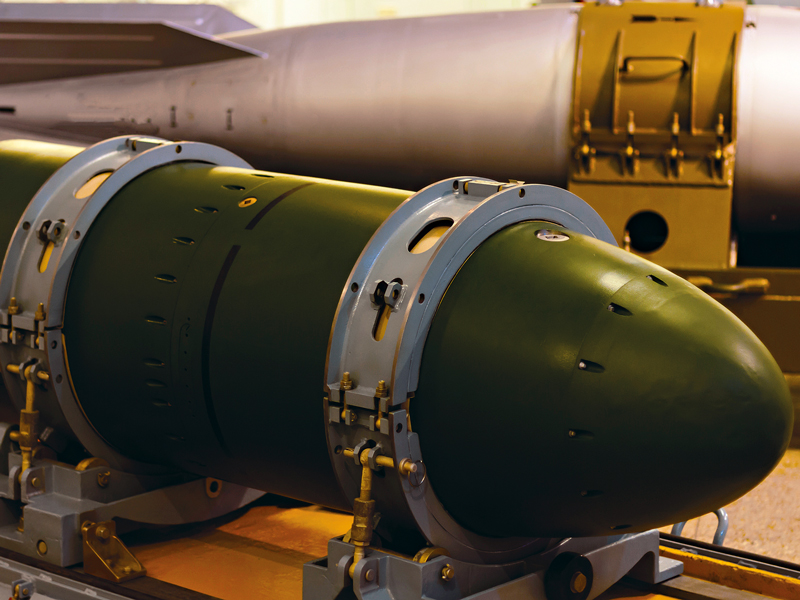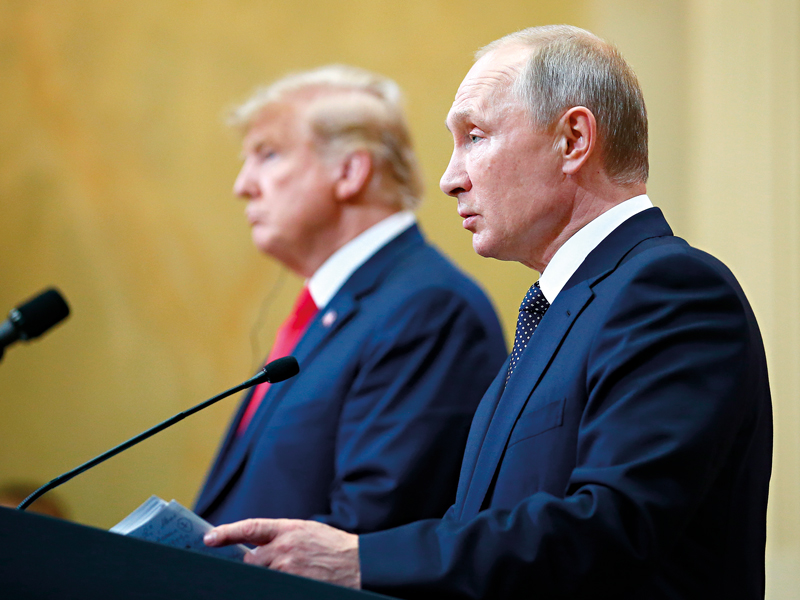Russian Government goes cloak and dagger about nature of recent explosion
In August this year, a mysterious explosion that took place near Russia’s White Sea region caused a spike in radiation levels. Experts now believe it was caused by a nuclear-powered missile

Fortunately, the explosion was by Russia’s White Sea coast and was far less damaging than the Chernobyl disaster of 1986
The medical staff at Arkhangelsk Regional Clinical Hospital in Russia were not told much about the three patients who arrived at approximately 4:30pm on August 8. They were rushed to the emergency room – naked save for some translucent plastic bags that had been wrapped around them – before being moved to separate operating theatres.
Explanations from Moscow were characteristically vague. Initially, the Russian Ministry of Defence declared that a fire caused by an explosion of a liquid-fuelled rocket engine had killed two individuals and injured four others. It also stated that background radiation remained at normal levels. However, local authorities in the city of Severodvinsk, some 25 miles away from where the explosion took place, provided contrasting information: they saw a spike in radiation levels 200 times that usually recorded.
It wasn’t until two days later that Rosatom, the state atomic energy corporation, issued a statement revealing that the explosion occurred during work on “an isotope power source”. Although the agency hadn’t used the word directly, the truth was out – a nuclear incident had occurred. Immediately, thoughts turned to the Chernobyl disaster of 1986 and the fallout that followed.
Although the US may have shelved plans for a nuclear-powered missile of its own, that doesn’t mean the country has laid down its arms completely
Fortunately, the explosion that took place by Russia’s White Sea coast was far less damaging than the one that occurred some 33 years ago. Nevertheless, the incident served as a reminder of the huge number of nuclear weapons that remain in the hands of governments all over the world today, and the destruction they can cause.
The mystery missile
Amid a slew of claims and counterclaims, facts regarding the explosion on August 8 remain difficult to pin down. So far, expert consensus points towards an experimental nuclear-powered cruise missile – specifically, the 9M730 Burevestnik. The weapon, which is claimed to have virtually unlimited range, is also sometimes referred to by its NATO code name, Skyfall.
“Currently, it is believed that the explosion occurred during a recovery operation of a Burevestnik missile, rather than during a failed flight test,” Anne Pellegrino, Project Manager and Research Associate at the James Martin Centre for Nonproliferation Studies at the Middlebury Institute of International Studies at Monterey, told The New Economy in September. “It is unclear exactly what caused the explosion, though reports indicate that it occurred as the missile was exiting the water. One hypothesis is that the reactor developed for the Burevestnik is cooled with liquid sodium, a common coolant for fast reactors. Liquid sodium is highly reactive with air and would cause an explosion similar to the one described during the August 8 incident.”
The existence of the Burevestnik is not disputed – Russian President Vladimir Putin revealed the missile himself in March 2018, along with a host of other hypersonic weapons. Since then, however, the development of the weapon has largely been kept under wraps. The information that has been gathered thus far indicates that the missile is powered by a nuclear reactor, allowing it to travel for thousands of kilometres at low altitude and very high speeds. This could allow it to avoid defence systems like those the US currently has in place.

It’s a formidable weapon, but also an unwieldy one. According to US intelligence, the missile was tested four times between November 2017 and February 2018, crashing every time. The danger of these tests, as the incident of August 8 proved, is that when a nuclear fuel source is involved, the risks are significantly higher than with conventional propellants.
In the aftermath of the explosion, some of the medical professionals at the Arkhangelsk hospital were flown to Moscow to undergo further tests. One of them was found to have traces of caesium-137, a radioactive isotope, in their muscle tissue. Although it is highly likely that the contamination resulted from treating survivors of the missile’s explosion, Russian officials had a different theory: they claimed the caesium-137 must have originated from “Fukushima crabs” that the doctor had eaten while on holiday in Thailand. Just like with Chernobyl, the cover-up was in full force.
The Skyfall-out
The exact cause of the explosion on August 8 may never be known. It is possible that Russia believes revealing more information about the event would risk other states developing similar technology. What is becoming clear, however, is the consequences of such developments: aside from caesium-137, other radioactive fission products, including strontium-91, barium-139, barium-140 and lanthanum-140, have all been detected near where the explosion took place.
“Theoretically, the reactor on the [Burevestnik] missile would be unshielded, meaning that anyone in its vicinity would be exposed to very high levels of radiation,” Pellegrino explained. “This is a system that I hope the Russians are never able to make fly. More generally, systems like the Burevestnik are incredibly destabilising and are not a good sign for what may be coming during a renewed arms race between the United States and Russia.”
Certainly, Russia is not the only nation to have considered using nuclear power to give its military arsenal a boost. The US tried to develop a similar weapon to the Burevestnik missile in the early 1960s, under the codename Project Pluto. It was, according to Pellegrino, “a crazy idea”, and was shut down in 1964.
One of the reasons Pluto was cancelled was that the nuclear reactor powering the weapon had to be unshielded to keep its weight down. This meant radioactive particles were continuously expelled throughout its flight. The missile would not simply destroy its target upon impact – it would irradiate everything and everyone it passed over. Even at a time when Cold War tensions were running extremely high, this technology caused too much collateral damage to conscionably be further developed.
Science and technology have advanced considerably in the decades since those early Project Pluto tests, but whether they have progressed enough to guarantee that only identified targets are affected by a nuclear-powered missile remains unknown. But, depending on who was in charge of such a weapon, this may not be a problem: given that apocalyptic outcomes are an inherent part of nuclear weaponry, perhaps the idea of collateral damage does not hold much water.
Clouds on the horizon
Although the US may have shelved plans for a nuclear-powered missile of its own, that doesn’t mean the country has laid down its arms completely. Already in possession of the world’s strongest military, the US is working on increasingly sophisticated new weaponry: lasers, hypersonic projectiles and high-velocity drones represent just a few of the projects under development. And, of course, the US continues to maintain and modernise its nuclear arsenal.

“I am not optimistic about the likelihood of seeing a world without nuclear weapons any time soon,” Pellegrino said. “I am equally worried about the backwards trend in arms control between the United States and Russia. The collapse of the Intermediate-Range Nuclear Forces Treaty and the lack of discussion between the two parties regarding the extension of the New START arms reduction treaty beyond 2021 means that we are rapidly approaching a time when there will be no legally binding limits on the world’s largest nuclear arsenals. Backsliding on arms control and this renewed arms race paint a grim future for nuclear disarmament.”
The Burevestnik missile explosion showed the unique risks that come with the development of nuclear weapons. It also demonstrated how much secrecy continues to shroud the technology. Initially, not even the death toll could be agreed upon: the Russian Ministry of Defence reported that two people had been killed; Rosatom said five. One thing is certain, however: for as long as the world is developing nuclear weaponry, lives will continue to be at risk.













